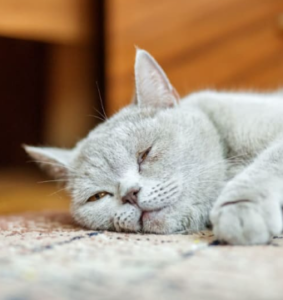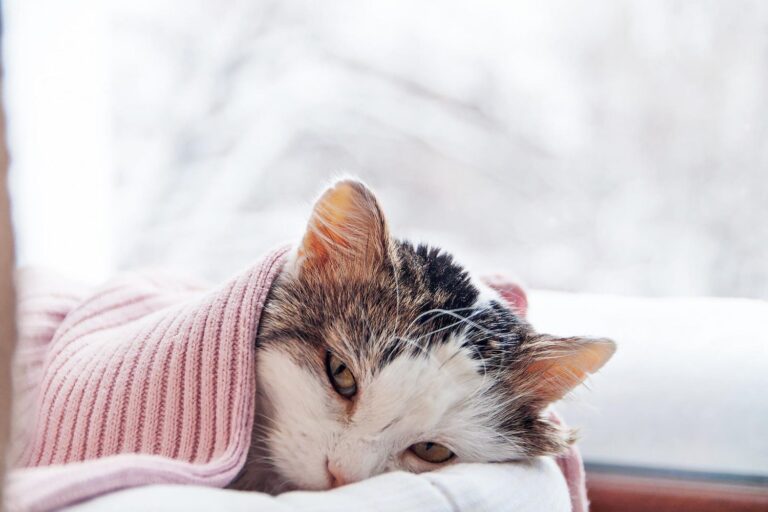Exploring the causes, symptoms, treatments, and prevention of upper respiratory infection in our feline friends can be quite the adventure, not unlike delving into a mystery novel. Just when you think you’ve got it all figured out, surprise and explosion – there’s a twist! Upper respiratory infections (URIs) in cats are akin to the common cold in humans, but with their own unique feline spin. So, let’s get our detective hats on and uncover the secrets of this ail, shall we?
Understanding what triggers upper respiratory infections in cats is crucial. It’s like piecing together a puzzle where the pieces are viruses, bacteria, and environmental factors. Imagine a tiny invader, like the feline herpesvirus or calicivirus, sneaking into your cat’s system – that’s the usual suspect in this case. But don’t rule out bacteria such as Chlamydophila felis or Bordetella bronchiseptica. They can also crash the party, leading to those sniffles and coughs. And let’s not forget those environmental factors – crowded shelters or a new furry sibling can stress out your kitty, making them more susceptible to infections.
Now, onto the signs of respiratory distress in cats. If your whiskered companion starts to sneeze, cough, or discharge from their nose or eyes, it’s time to sit up and take notice. They might also show signs of lethargy or have a reduced appetite. It’s like they’re telling you, “Hey human, I’m not feeling too hot right now.” And that’s your cue to whisk them off to the vet, where a thorough diagnostic process awaits. But don’t worry, with the right treatment and a bit of TLC, your feline friend can bounce back to their usual self-assured, mouse-chasing ways.
Causes of Feline Upper Respiratory Infections

Imagine a battlefield, but instead of soldiers, we have tiny invaders like viruses and bacteria that are highly contagious. They can spread through direct contact, sneezing, or even sharing food and water bowls. Don’t forget about stress, which can be like a loud bang that sets off an explosion, weakening your cat’s immune system and making them more susceptible to infections. And if you’re thinking about the great outdoors, remember that it’s not just a playground for your cat but also a potential source of infections.
Here’s a quick list of the usual suspects causing these infections:
- Feline Herpesvirus (FHV-1): A common virus that often causes lifelong infections.
- Feline Calicivirus (FCV): Another widespread virus known for causing mouth ulcers and pneumonia.
- Bordetella bronchiseptica: A bacteria that can lead to severe coughing.
- Chlamydophila felis: A bacteria that can cause conjunctivitis alongside respiratory issues.
So, what can you do? It’s simple: keep an eye out for any changes in your cat’s behavior or health and always consult your vet if you suspect something’s amiss. After all, prevention is better than cure, right?
Symptoms and Diagnosis

First off, here’s a checklist of symptoms to watch for:
- Nasal discharge: A clear sign something’s up.
- Sneezing: More than a cute quirk, it could indicate irritation or infection.
- Coughing: Cats don’t usually cough up hairballs every day.
- Fever: Warm ears and a hot nose are red flags.
- Decreased appetite: When the sniffles hit, their desire to eat might too.
- Lethargy: Less playtime could mean more than just a lazy day.
- Eye discharge: Keep an eye out for any gunky or watery eyes.
But don’t just take these symptoms at face value; your vet will want to confirm with a thorough diagnosis. This could include a physical exam, possibly some lab tests, and a review of your cat’s medical history. Sometimes, they might even recommend a swab test to identify the particular virus or bacteria at play. Remember, a prompt visit to the vet can make all the difference in managing your cat’s health and comfort.
Treatment Options
When your purring pal is under the weather with an upper respiratory infection, you’re likely to feel a mix of concern and a strong desire to help them bounce back. Treatment for a feline upper respiratory infection can vary depending on the severity and underlying cause. But fear not! There are several strategies to help your feline friend feel better.
For starters, antibiotics may be prescribed if a bacterial infection is at play. It’s crucial to complete the full course of antibiotics, even if your cat seems to be feeling better. On the flip side, if we’re dealing with a viral infection, antibiotics won’t do the trick. Instead, your vet might recommend antiviral medications or suggest supportive care to help your cat’s immune system fight off the virus.
Supportive care can include a range of treatments aimed at keeping your cat comfortable and ensuring they stay hydrated and nourished. This might involve:
- Providing a warm, cozy spot for rest
- Using a humidifier to ease breathing
- Encouraging food and water intake, possibly with appetite stimulants
- Cleaning their eyes and nose if there’s any discharge
Remember, every cat is unique, and so is their path to recovery. Always consult your vet for a tailored treatment plan. With the right care, your feline friend will have the best shot at a swift and full recovery, ready to leap back into their routine with the usual nine-life gusto!
Prevention and Vaccination
Prevention is key when it comes to upper respiratory infections in cats. You might be wondering, “How can I protect my furry friend from getting sick?” Well, it’s all about creating a safe and clean environment. Regular cleaning of your cat’s living space, avoiding overcrowded conditions, and minimizing stress are just a few ways to keep your cat’s immune system in tip-top shape.
When it comes to vaccination, it’s a powerful tool in the fight against respiratory infections. Think of it as a personal shield for your cat, guarding them against common culprits like the feline herpesvirus and feline calicivirus. Here’s a quick rundown of the vaccination schedule:
- Initial vaccination: Administered at approximately 6-8 weeks of age
- Booster shots: Given every 3-4 weeks until 16-20 weeks old
- Annual boosters: Recommended to maintain immunity
Remember, while vaccines are incredibly effective, they’re not a bulletproof vest. Keeping an eye on your cat’s health and consulting with your vet for the best vaccination strategy is the ultimate way to ensure your cat’s wellbeing. And let’s not forget, a healthy cat is a happy cat!
